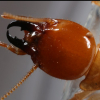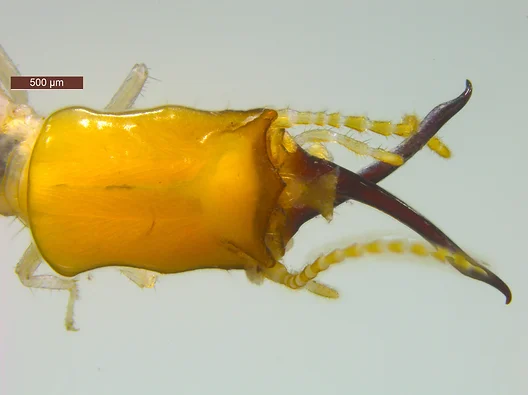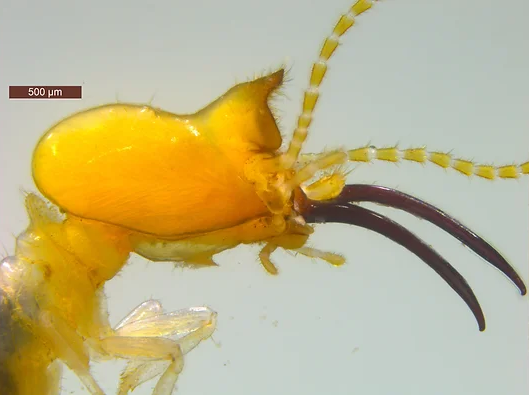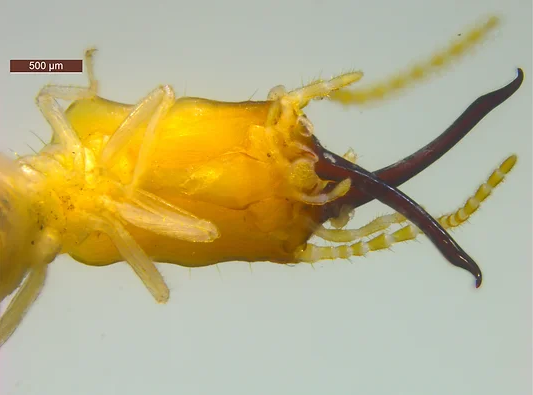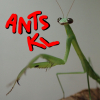Hello forum, it's termite-time again! This time i want to share with you a few pics by Dr. Rudolf Scheffrahn of an alcohol-preserved soldier of Cavitermes tuberosus, an interesting soil-feeding termite from the Amazon region.
Soldiers of this species (and congeners) sports a bizarrely-shaped head topped by a massive three-horned "crest" that contain part of the frontal gland and likely also aid in defence from the front. Their mai method of offence is the symmetrical snapping technique, where the long baton-shaped mandibles are pressed against each other, lock up, deform and store large amounts of energy until a critical point is reached, at which point they violently cross over each other delivering a powerful frontal blow. Beside these physical strikes, they also produce a defensive secretion from the aforementioned frontal gland.
Another peculiarity of this species is the employment of the asexual queen succession (AQS) strategy, where the primary queen can produce large number of secondary ones (up to several hundreds) to replace her, mate with the primary king and thus increase colony reproductive potential; these secondary (neotenic) queens are produced through parthenogenesis (asexually), unlike all other colony members who are produced sexually. Quite the interesting stuff!
And now for the photos:
Dorsal wiew of a C. tuberosus soldier's head. Note the peculiar shape of the former, the large three-horned crest (in truth best seen in the next pic)) and the elongated, baton shaped mandibles designed to snap at foes.
Lateral wiew. Here you can see best the weird crest of this genus.
Ventral wiew.

